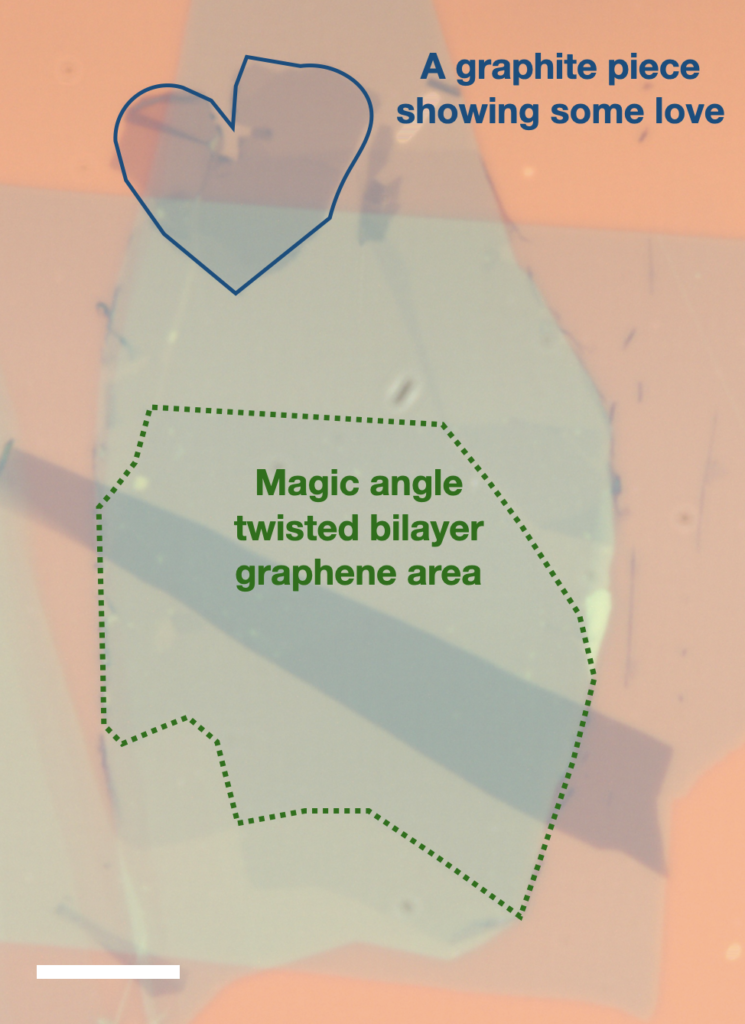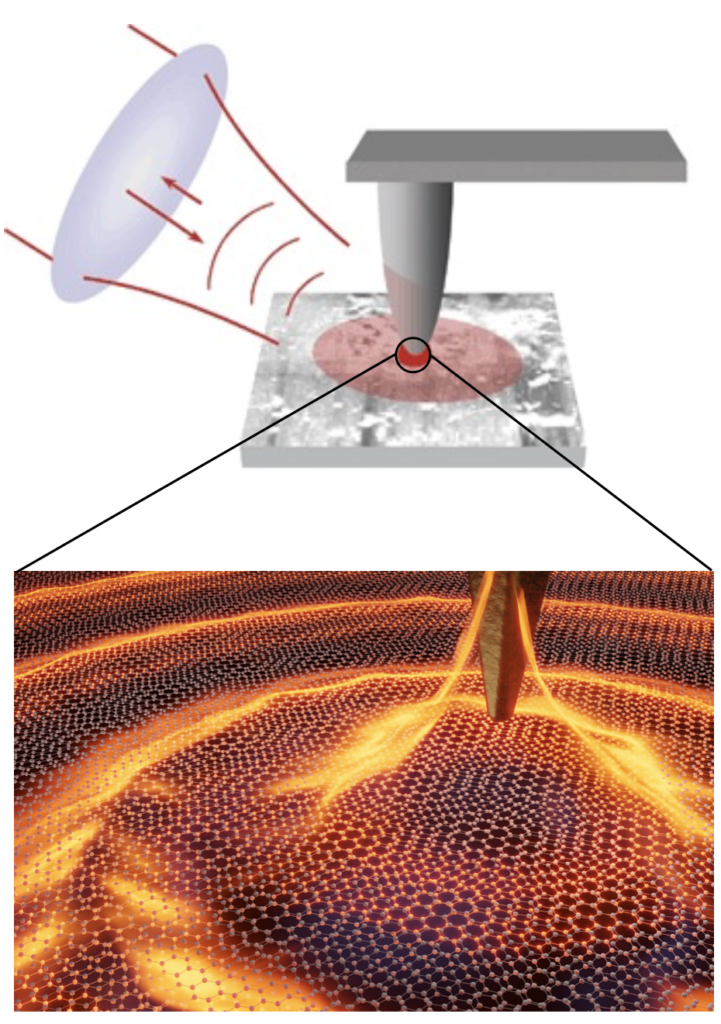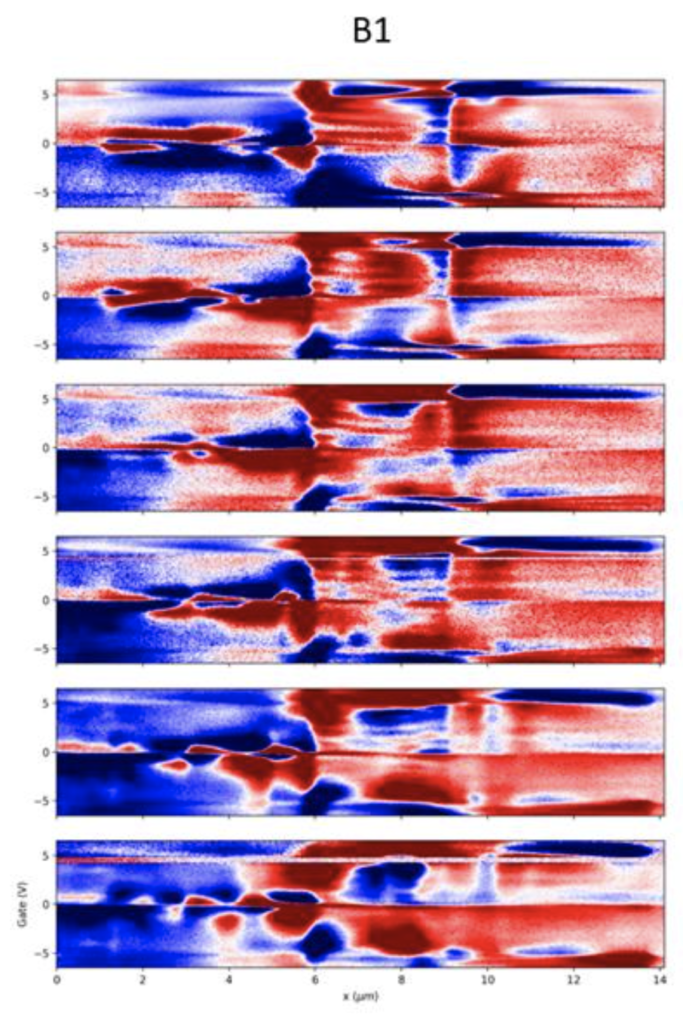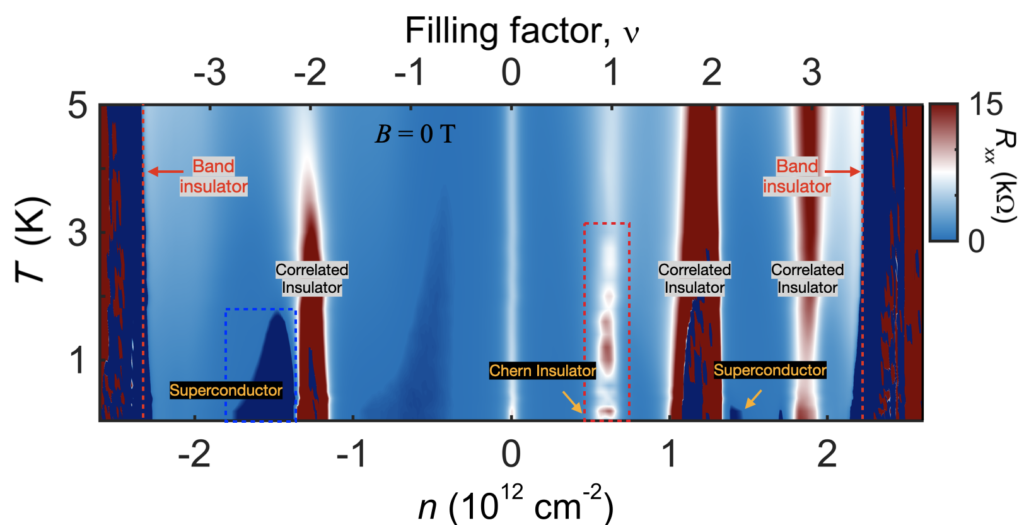
We apply novel scanning probe techniques to study emergent phenomena in two-dimensional materials. Our research is based on utilizing coupling between light and matter at a scale of several orders of magnitudes below the diffraction limit gaining important insights into fundamental properties of strongly correlated condensed matter systems. Recently discovered, magic angle twisted bilayer graphene (MATBG) and other moiré materials featuring electronic flat bands opened a whole new pathway to explore strong electronic interactions with unprecedented tuneability where a sample can exhibit (unconventional) superconductivity, topology and correlated insulators simply by electrically tuning its charge carrier density. Now we want to understand what light can teach us about their fundamental properties. By controlled stacking of different two-dimensional materials we study:
- Emergent phenomena in graphene based van der Waals heterostructures
- Semiconductor-based moiré superlattices
- Polaritons and light-matter interaction in strongly correlated systems
- Local photovoltage generation and thermodynamics properties
- Spectroscopy of moiré materials at the nanoscale
- Unconventional superconductivity
Research Directions:
In our laboratory we apply the following approaches to unveil and study strongly correlated phenomena:
- We use state-of-the-art methods to fabricate cleanest moiré-based heterostructures utilizing transfer microscopes and monolayer materials. Controlled stacking of two-dimensional layers allows us to access intriguing electronic and opto-electronic properties, engineer exotic states of matter and manipulate them using gate-controlled electrostatic potentials. The image demonstrates an example of a MATBG heterostructure used to study emergent anomalous Hall effect. Scale bar is 10 um.

- We use a novel scanning probe method to study electronic properties of strongly correlated two-dimensional systems and explore their possible applications in the future quantum technology. This technique allows us to measure local optical conductivity resolved on the few order of magnitude below the Abbe diffraction limit. Enhanced light-matter interactions allow u for resolving and analyzing intriguing plasmonic properties.

- We study local photovoltage generation on the nanoscale to understand thermodynamic properties of strongly correlated electronic gases. These measurements allow us to understand entropy of flat electronic bands and spatially resolve correlated energy gaps. Image: local photovoltage maps revealed in a magic angle twisted trilayer graphene device.

- We study electronic magneto transport properties of our heterostructures for preliminary analysis and characterization to reveal strongly correlated phases at the mesoscale before characterizing their local properties. Image: rich phase space revealed in a magic angle twisted bilayer sample.

